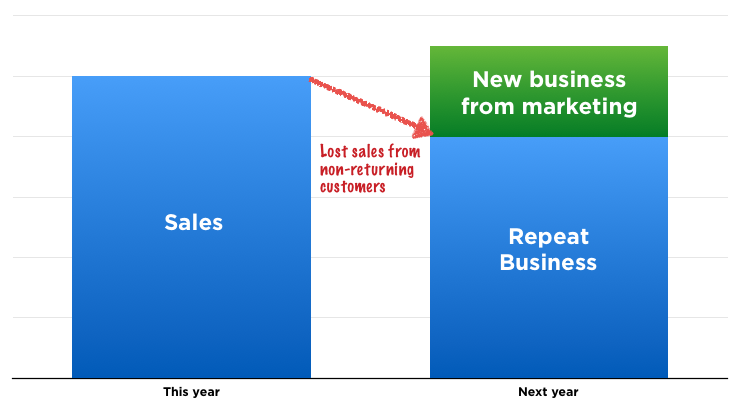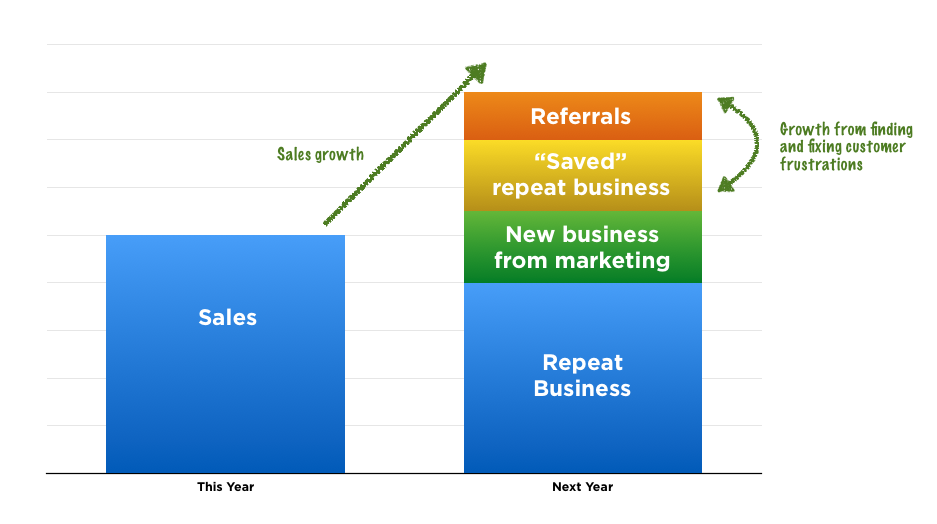

Do you want to learn exactly how to increase sales? This is a step-by-step guide to eliminating one of the most common sales blind-spots we see. You’ll learn, with success stories, what the problem is, how much it could be costing you, and how to fix it.
The web has opened up huge sales opportunities…
Low overheads, scale up fast, punch above your weight, and a whole wide world of potential customers.
But it comes with a challenge when figuring out how to increase sales effectively, as there’s a big disadvantage compared to traditional business:
You never get to meet your customers.
Derek Bacharach, owner at the store Simply Superheroes describes how this affects him:
One of the drawbacks to having an e-commerce store is not being able to see the end result of the shipments you send out. You don’t see the expression on your customers’ faces when they open the packages addressed to them from you.
That lack of face to face contact means that two of the most powerful and cost-effective sales drivers for a traditional business are much harder to secure for an e-commerce business:
**The two traditional ‘weapons of choice’ for retention and referrals are great service and personal relationships.
And note that although marketing is most people’s default choice for growing sales, marketing is never the answer to keeping a customer.
Marketing’s how you win one for sure.
But what happens after that, whether you’ll get repeat business and word-of-mouth referrals, is all down to their experience of having dealt with you.
In an e-commerce business you can’t count on inter-personal skills to make these sources of revenue work for you. So, it’s like having one hand tied behind your back unless you find a way to compensate.
And it’s a bigger problem (or opportunity) than you might think.
Because although all of us in business do our best to leave customers with a good impression, things often go wrong that we’re not aware of.
We took a large, anonymous sample of 100,000 responses from our database of satisfaction scores to work out how much business is at risk.
We found that 27% of people were dissatisfied in some way. Which means 27% of customers had a reason NOT to buy again, and they’re not likely to pass on a recommendation to others, either.
Worse, they may even be telling others to steer clear.
So: 27% of sales are at risk in companies that regard themselves as ‘good’ at customer service.
Unless, of course, you simply make sure you find and fix any problems to counter the frustrations and unlock those sales and recommendations.
That’s exactly why we have the data - our customers use our product to find out exactly what the issues are so they can fix them.
Let’s have a look at why this makes such a big impact on e-commerce sales…

There’s a steady run rate of sales, but each year some customers slip quietly away. You may not even notice they’ve gone because you’re so busy trying to bring new customers on board.

This chart illustrates the dramatic financial benefit that can be gained from some simple measures to improve customer satisfaction.
Now you’ve solved the revenue leaks:
There are no more avoidable lost customers.
Existing customers have no hesitation to recommend you because you’ve dealt brilliantly with any frustrations.
In fact, the improved service means they’re positively raving about you.
Now that the problem’s laid bare, the good news is that once you’re alert to the problem, it’s easy to fix.
Even better news - it’s 6 times cheaper to retain a customer than replace them with a new one.
So, a bit of time and money spent on guaranteeing that your existing customers are happy delivers a huge return.
Here are two simple things you can do which are both cost effective and time effective.
Facial expressions, tone of voice, gestures, body language, regional or national culture. They’re all ways that customers give signals.
According to expert research…
Over 60% of interpersonal communication is non-verbal.
Some people estimate it’s as high as 93%.
Either way, it’s a mighty big deficit that online businesses need to overcome if they’re to find and eliminate all their customers’ frustrations, which at the best of times often remain unspoken.
And if you don’t ask for feedback, you’re missing 100% of the signals.
This is what to do to overcome that problem:
Send a simple request for feedback after the customer has received their order. Do it in a way that benefits them - done right it’s not a request to fill in a survey, it’s an easy opportunity for them to get the service they want.
A quick and appropriate response will blow their socks off.
Because hardly anyone does this.
After a while, you’ll find that most of the feedback is praise - and that has a terrific motivational effect for everyone.
That helps everyone stay tuned in to the things that are most important to customers and it’s far more effective than customer service training (though that can help too).
As well as the immediate response back to each customer, from time to time look for patterns and recurring problems in the data you collect.
Here are some tips on how to get the best results:
I had a shock recently.
A prospective customer asked me for help designing their customer feedback form. One of the questions they wanted to ask was “Did you receive a response to any queries within 24 hours?”
24 hours?
I wonder if they’d still be in business running a ‘bricks and mortar’ store if they expected customers to stand in line waiting that long for a reply.
This just reinforces the fact that another disadvantage of running an ecommerce business is that you’re insulated from the realities of dealing with customers.
In extreme cases like this, customers become an annoyance. An interruption to making money.
Rather than the paymasters and lifeblood of your business.
There are libraries of books on customer service and how to train and motivate a team of people to deliver it, but in my experience they don’t deliver as much value as customer feedback.
But get these three customer service ingredients right, and you’ll be a long way ahead of the pack:
Clearly you won’t get a sale if you don’t do this (whether it’s a new or existing customer). But the flip side is that if you’re fast, knowledgeable and helpful you increase confidence and make it more likely that people will buy from you and less likely that they will take the risk of going elsewhere.
Poor communication is one of the biggest complaints from customers for any business. Again, because there’s no personal relationship, any problems like this are exacerbated in online trading.
Whether it’s the progress of their order, or an update on how you’re dealing with their problem, it’s better to over communicate rather than under communicate.
And NEVER make promises in an automated email responder unless you will deliver on them. If you automatically promise a reply within an hour, make sure you do it in half that time.
Wise business owners know the value of complaints. Read our ninja guide on complaint handling for how to turn a complaint into more sales.
I hope you’ve found this useful. Why not take a look at some real success stories to see how this works in practice?
Or if you want to know more about the theory, check out our treasure trove of resources including this guide to the benefits of customer feedback?
With over 14 years of experience, CustomerSure help mid-market firms acheive measurable improvements in customer experience by putting in place world-class VoC programmes. Find out more about how we work with our clients.

Gain a clear view of how mature your VoC programme is, and receive tailored recommendations to take it to the next level.
Take the assessment »Connect with a CX expert who’ll help determine your current VoC programme maturity level and provide a 3-step action plan to improve.